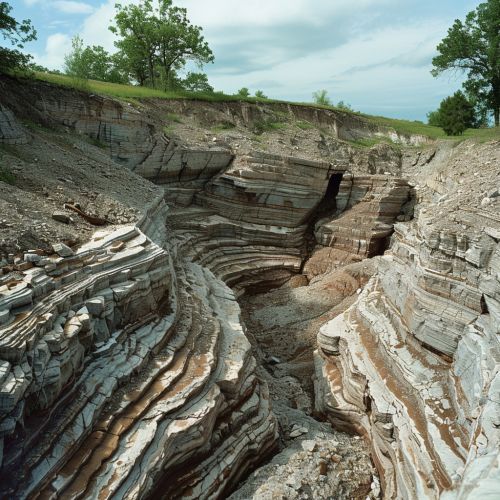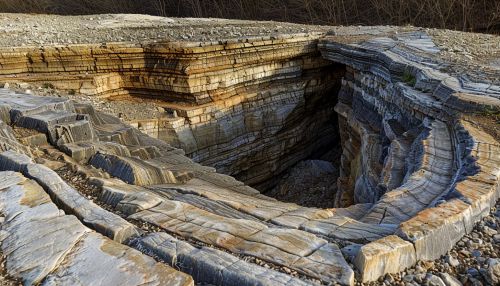Synclines
Introduction
A syncline is a fold in rock layers that is convex downwards and has its oldest beds at its core. The term syncline comes from the Greek words 'syn-' meaning together and 'cline' meaning to lean. It describes the way the two sides of the fold lean towards each other. Synclines are typically a downward fold, termed a synformal syncline (i.e., a trough); but synclines that point upwards, or perched, can be found when strata have been overturned and folded (an antiformal syncline).
Formation
Synclines form through a variety of processes, most commonly through the compression of sedimentary layers by tectonic forces. These forces can be the result of plate tectonics, the movement of the Earth's crust due to the motion of the tectonic plates. The compression causes the layers of rock to buckle and fold, creating a series of wave-like structures known as folds. The downward-facing fold is known as a syncline.


Characteristics
The key characteristic of a syncline is its shape. The fold is concave upwards, with the oldest rock layers at the core of the fold and the younger layers on the outside. This is known as a 'younging direction'. This is the opposite of an anticline, which is a fold that is convex upwards, with the oldest rocks on the outside.
Synclines can vary greatly in size, from small folds in rock layers that are only a few meters wide, to large synclines that stretch for many kilometers. The size of a syncline can give geologists clues about the forces that created it. For example, large synclines often form as a result of major tectonic events, such as the collision of two tectonic plates.
Types of Synclines
There are two main types of synclines: those that are simple and those that are complex.
A simple syncline is a fold with a single axis of symmetry. This means that the two halves of the fold are mirror images of each other. Simple synclines are often formed by uniform compression, where the forces acting on the rock layers are the same in all directions.
A complex syncline, on the other hand, has multiple axes of symmetry. This means that the fold is not symmetrical, and the two halves of the fold do not mirror each other. Complex synclines are often formed by non-uniform compression, where the forces acting on the rock layers vary in different directions.
Importance in Geology
Synclines are of great importance in the field of geology, particularly in the study of sedimentary rocks. They provide valuable information about the geological history of an area, including the types of environments that existed in the past and the processes that have shaped the landscape.
In addition, synclines often form reservoirs for natural resources such as oil and gas. The shape of the syncline can trap these resources in the rock layers, making them accessible for extraction. Therefore, understanding the structure and formation of synclines can have significant economic implications.
